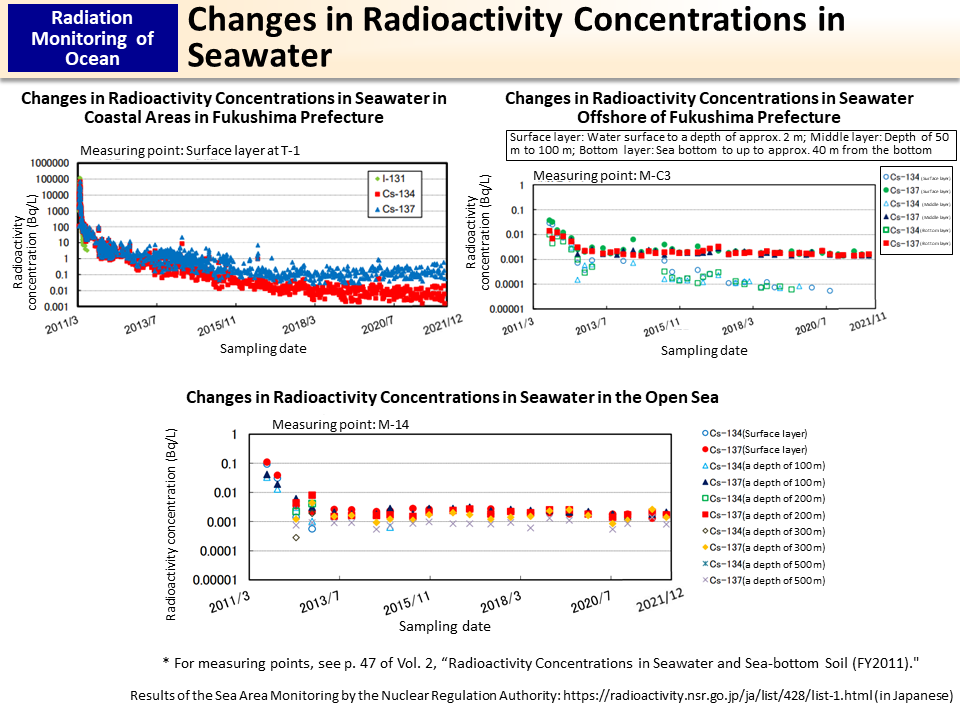Changes in Radioactivity Concentrations in Seawater
Soil with radioactive cesium is transported to coastal areas via rivers.
Radioactivity concentrations in seawater samples collected near Tokyo Electric Power Company (TEPCO)'s Fukushima Daiichi NPS rose to 100,000 Bq/L immediately after the accident, but dropped to one-thousandth (100 Bq/L) in one and a half months as a result of dilution and dispersion. The concentrations further decreased to 10 Bq/L in one and a half years and are 1 Bq/L or less at present.
In six months after the accident, soil containing radioactive cesium was transported from the coastal areas to 30 km offshore, but the concentration detected at Measuring Point M-C3 was 0.05 Bq/L or one-200th of the concentrations detected in the coastal areas. Generally it is considered that radioactivity concentrations become higher at the sea bottom due to settling of part of radioactive cesium, but in 2012, radioactivity concentrations were as low as 0.008 Bq/L in samples collected from bottom layers, and radioactivity concentrations detected in samples collected from surface layers and middle layers also decreased.
At Measuring Point M-14 in the open sea, 180 km away from the land, radioactivity concentrations detected in surface layers were 0.1 Bq/L, the same level of concentrations detected 30 km offshore, in six months after the accident. The concentrations further showed a two-digit decrease to 0.001 Bq/L in two years after the accident.
(Related to p.186 of Vol. 1, “Distribution of Radioactive Cesium in the Ocean”)
- Included in this reference material on March 31, 2014
- Updated on March 31, 2023

